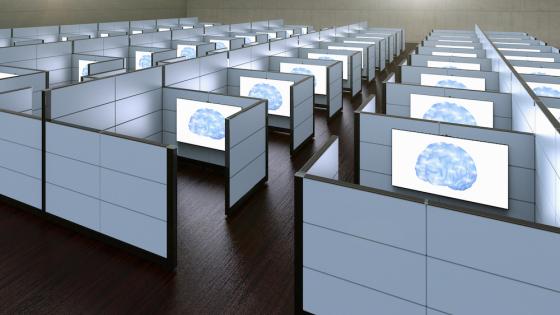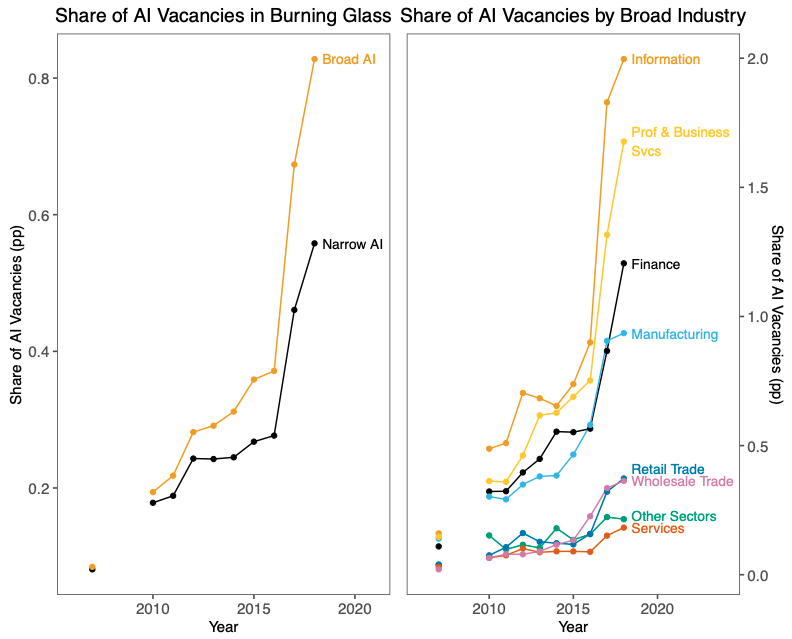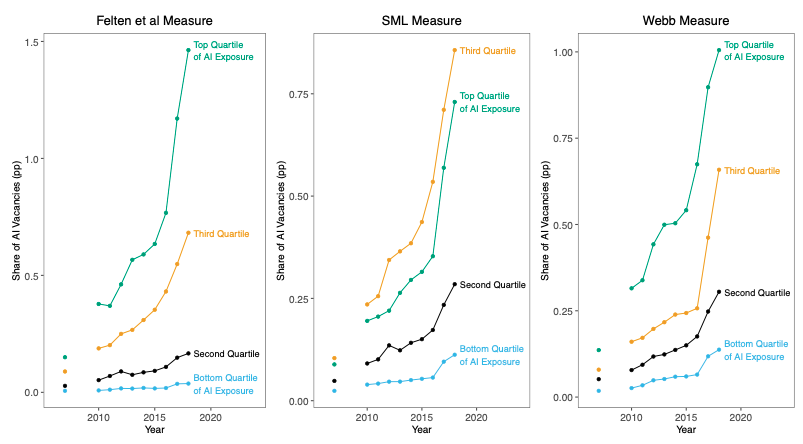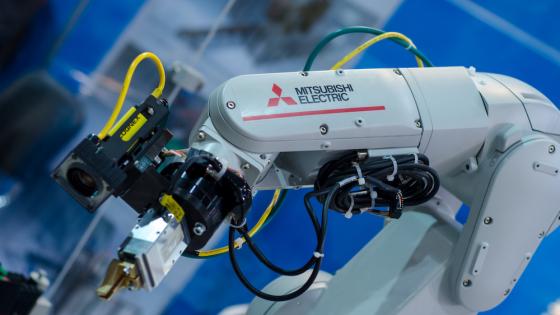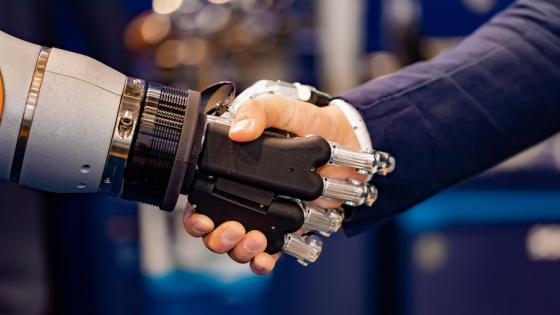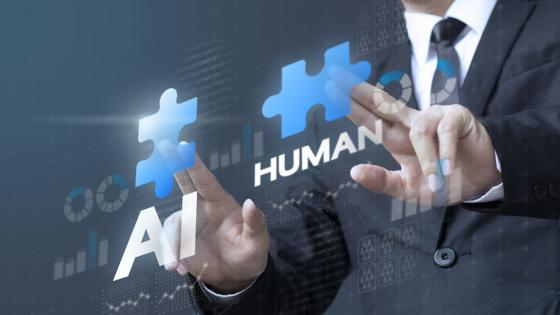Artificial intelligence (AI) refers to algorithms that act intelligently, by identifying patterns in unstructured data (for example, speech or image data), and then use this information to accomplish tasks that would normally require human judgement or expertise. The last decade has witnessed rapid advances in AI based on new machine learning techniques and the availability of massive data sets. The pace of change is expected to increase in the years to come (e.g. Neapolitan and Jiang 2018, Russell 2019), and AI applications have already started to impact businesses (e.g. Agarwal et al. 2019).
Some commentators see this as a harbinger of a jobless future (e.g. Ford 2015, West 2018 Susskind 2020), while others see the potential of the oncoming AI revolution to enrich human productivity and work experience (e.g. McKinsey Global Institute 2017). The persistence of these contrasting visions is unsurprising given the limited evidence to date on the labour market consequences of AI.
Not only are there few studies to date on the labour market consequences of AI, there is relatively little systematic evidence on whether there has indeed been a major increase in AI adoption – as opposed to just extensive media coverage of AI. Moreover, it is possible to find examples of AI technologies either replacing work or complementing workers precisely because AI, as a broad technological platform, is capable of doing both, and it is thus partly a matter of societal and business choice how much job displacement AI will create (Acemoglu and Restrepo 2019b).
In new research (Acemoglu et al. 2020), we provide evidence on AI adoption in the US and its implications. Our starting point is that AI adoption can be partially identified from the footprints it leaves at adopting establishments as they hire workers specialising in AI-related activities, such as supervised and unsupervised learning, natural language processing, machine translation, or image recognition. To put this idea into practice, we build an establishment-level data set of AI activity based on the near-universe of US online job vacancy postings and their detailed skill requirements, provided to us by Burning Glass Technologies, for the years 2007 and 2010 through 2018. We classify each vacancy posted by an establishment according to whether it requires skills in AI.
Our data show that the use of AI has grown in the US since 2010 and is now relatively widespread. The left panel in Figure 1 plots the share of all vacancies that require AI in the US, for 2007 and 2010 onwards. Our Broad and Narrow measures are two different classifications of AI based on the text of vacancies. AI use increases over time, with an uptick in 2016.
Figure 1
AI use is far from evenly spread across the economy. The right panel of Figure 1 plots the share of AI vacancies by broad industry sector. The Information and Technology and Professional and Business Services sectors post a particularly high share of AI vacancies. These sectors are primarily suppliers of AI to the rest of the economy. But importantly, AI is also spreading rapidly in a number of other sectors such as finance and manufacturing, who are likely to use AI in production.
A task-based framework to guide the empirics
We start with a task-based perspective, linking the adoption of AI and its possible implications to the task structure of an establishment. This perspective emphasises that current applications of AI are capable of performing specific tasks and predicts that firms engaged in those tasks will be the ones that adopt AI technologies (Acemoglu and Autor 2011, Acemoglu and Restrepo 2018, 2019a). This is not the only approach one could take to AI. One could also think of AI as complementing some particular business models (rather than performing specific tasks within those models) or as allowing firms to generate and commercialise new products (Agarwal et al. 2019, Bresnahan 2019). But the task-based approach is particularly well-suited to our empirical approach and receives support from our empirical findings, as we now explain.
To identify the tasks compatible with current AI capabilities, we use three distinct but complementary measures: the AI occupational impact measure by Felten et al. (2018, 2019); the Suitability for Machine Learning (SML) index by Brynjolfsson et al. (2018, 2019); and Webb's (2020) AI Exposure score. Each of these indices is constructed based on different assumptions and identifies different sets of tasks and occupations as being most impacted by AI technologies. We construct each establishment's AI exposure from its baseline (2010) occupational structure according to each one of these indices, and we use all three of these proxies for AI exposure throughout our analysis. Since our goal is to study the impact of AI on AI-using firms rather than AI-producing firms, our empirical analysis excludes firms in the Professional and Business Services and Information Technology sectors, both of which are primary suppliers of AI services.
The effects of AI on jobs
Our first result is that consistent with a task-based view of AI, the adoption of AI is driven by establishments with task structures that are compatible with current AI capabilities. Figure 2 documents this finding. We plot the evolution of the share of vacancies requiring AI, separately for establishments with high or low exposure according to each of our measures: in the first panel with the measure from Felten et al. (2018, 2019), in the second panel with the SML measure, and in the third panel with the measure from Webb (2020). In regressions, the strong association between AI exposure and subsequent AI hiring is robust to numerous controls and specification checks when using the Felten et al. (2018, 2019) and the Webb (2020) measures, though less robust with SML.
Figure 2
We then investigate whether AI exposure is associated with changes in the skill content of posted vacancies. With the Felten et al. (2018, 2019) and Webb (2020) measures (and with the SML measure to a lesser degree), we find that AI exposure is associated with both a significant decline in some of the skills previously demanded in vacancies and the emergence of new skills. This evidence bolsters the case that AI is altering the task structure of jobs, replacing some human-performed tasks while simultaneously generating new tasks accompanied by new skill demands.
The finding that establishments with AI-suitable tasks hire workers into AI positions and change their demand for certain types of skills does not, of course, tell us whether AI is substituting for or complementing the workers engaged in these tasks. To gain insight into this question, we also investigate the consequences of the recent surge in AI for labour demand across establishments.
In principle, AI-exposed establishments may see an increase in (non-AI) hiring, if either AI directly complements workers in some tasks, increasing their productivity, or AI substitutes for workers in some tasks, but increases (total factor) productivity sufficiently to raise demand in non-exposed tasks and occupations (Acemoglu and Restrepo 2019a). Conversely, AI adoption may reduce hiring if many tasks are replaced by AI while the additional hiring in non-automated tasks spurred by AI adoption does not make up for this displacement.
Our results consistently show no positive relationship between AI exposure and establishment hiring. Rather, we find evidence of lower hiring associated with greater AI exposure in almost all of the specifications using the Felten et al. (2018, 2019) measure and in most specifications with the Webb (2020) measure. The timing of these relationships is plausible, as they concentrate in the time window between 2014 and 2018, during which AI vacancy postings surged. This pattern of results, combined with our estimates showing that AI adoption is concentrated in establishments with more AI-exposed tasks, suggests that the recent AI surge is driven in part by task substitution whereby AI automates a subset of tasks formerly performed by labour. We find no empirical support for either the view that there are major human-AI complementarities in these establishments or the expectation that AI will increase hiring because of its large productivity effects – though of course we cannot rule out that other applications of AI not captured here could have such effects.
In contrast to the establishment-level patterns, we do not detect any relationship between AI exposure and overall employment or wages at the industry or occupation level. There are no significant employment impacts on industries that have a task structure that exhibits greater exposure to AI, and also no employment or wages effects for occupations that are more exposed to AI. This is most likely because it is still too soon to see the effects of AI technologies at the aggregate level.
A summary judgement
Our results show that despite the notable surge in AI adoption, the impact of AI is still too small relative to the scale of the US labour market to have had first-order impacts on employment patterns – outside of AI hiring itself. Nevertheless, our finding that AI adoption is significantly driven by establishments that have a large fraction of tasks that are AI-suitable, combined with the evidence for a negative association with establishment-level non-AI hiring, implies that any positive productivity and complementarity effects from AI are at present small compared to AI's displacement consequences.
References
Acemoglu, D and D Autor (2011), “Skills, Tasks and Technologies: Implications for Employment and Earnings”, Handbook of Labor Economics 4: 1043--1171.
Acemoglu, D, D Autor, J Hazell and P Restrepo (2020), “AI and Jobs: Evidence from Online Vacancies”, NBER working paper No w28257.
Acemoglu, D and P Restrepo (2018), “The Race between Man and Machine: Implications of Technology for Growth, Factor Shares, and Employment”, American Economic Review 108(6): 1488-1542.
Acemoglu, D and P Restrepo (2019a), “Automation and New Tasks: How Technology Displaces and Reinstates Labor”, Journal of Economic Perspectives 33(2): 3-30.
Acemoglu, D and P Restrepo (2019b), “The Wrong Kind of AI? Artificial Intelligence and the Future of Labour Demand”, Cambridge Journal of Regions, Economy and Society 13(1): 25-35.
Agarwal, A, J S Gans and A Goldfarb (2018), Prediction Machines: The Simple Economics of Artificial Intelligence, Cambridge: Harvard Business Review Press.
Bresnahan, T (2019), “Artificial Intelligence Technologies and Aggregate Growth Prospects”, Unpublished manuscript, Stanford.
Brynjolfsson, E, T Mitchell and D Rock (2018), “What can Machines Learn, and What Does it Mean for Occupations and the Economy?”, AEA Papers and Proceedings 108.
Brynjolfsson, E, T Mitchell and D Rock (2019), “Machine Learning and Occupational Change”, Unpublished manuscript, MIT.
Felten, E, M Raj and R Seamans (2018), “A Method to Link Advances in Artificial Intelligence to Occupational Abilities”, AEA Papers and Proceedings 108.
Felten, E, M Raj and R Seamans (2019), “The Effect of Artificial Intelligence on Human Labor: An Ability-based Approach.”, Academy of Management Proceedings 1.
Ford, M (2015), The Rise of the Robots, New York: Basic Books.
McKinsey Global Institute (2017), “Artificial Intelligence: The Next Digital Frontier?”, Discussion Paper.
Neapolitan, R E and X Jiang (2018), Artificial Intelligence: With an Introduction to Machine Learning, London: Chapman and Hall/CRC, Second Edition.
Russell, S (2019), Human Compatible: Artificial Intelligence and the Problem of Control, London: Penguin.
Susskind, D (2020), A World Without Work: Technology, Automation and how We Should Respond, London: Penguin.
Webb, M (2020), “The Impact of Artificial Intelligence on the Labor Market”, Unpublished manuscript, Stanford.
West, D M (2018), The Future of Work: Robots, AI, and Automation, Washington, DC: Brookings Institution Press.
